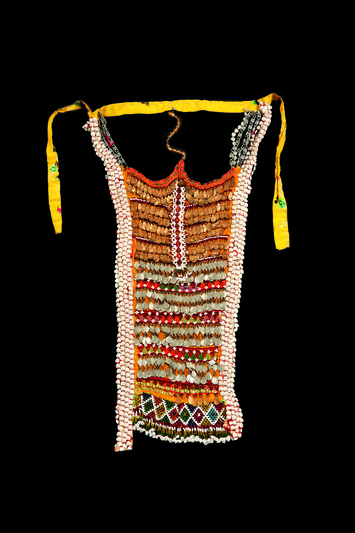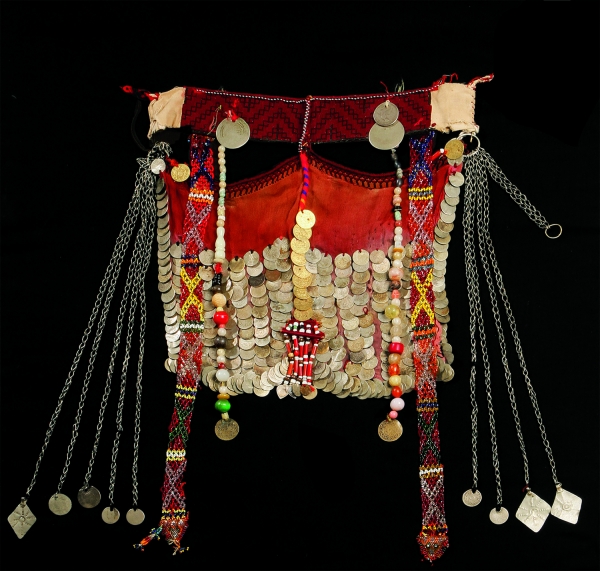Bedouin is a term that is commonly used in the Middle East to indicate people who live outside the urban centres and who mainly live a nomadic or semi-nomadic existence, or directly descend from these people. The term is derived from Arabic badiya, which refers to the desert and the term badu, which refers to a person living in the desert. The Bedouin refer to themselves as Arabs and more specifically identify themselves with a particular tribe, many of which originated from what is now Saudi Arabia.
Most of the Bedouin, also those who have adopted a settled life, retain much of their Bedouin culture, which includes traditional music, story telling and poetry, dances and their specific dress. These often show their tribal background. Bedouin can be found from Morocco in the extreme west (the Maghreb) of the Arab world, far to the east to the deserts of Syria, Iraq, and the Arabian Peninsula. Most Bedouin eke out a livelihood, or at least used to, by herding goats and dromedaries. These animals were used for their meat, milk and wool, while dromedaries were also used for transport.
 Photograph of a group of Bedouin men from Kuwait, 1950's (TRC 2017.1683). Click the illustration for the TRC catalogue entry.Men’s dress
Photograph of a group of Bedouin men from Kuwait, 1950's (TRC 2017.1683). Click the illustration for the TRC catalogue entry.Men’s dress
As a generalisation, many Bedouin men wear a basic outfit made up of trousers (shalwar, serwal), a long gown (thob, galabiya, dishdasha), a belt, a cloak (aba, bisht), a coat (furwah) or jacket in the colder weather, and a head covering of some kind, often made up of a large headcloth (ghutra, hatta, kufiya, shemagh) and a headrope (aqal). There are, of course, a number of different variations upon this theme. Many Bedouin men wear Western-style clothing, especially when visiting urban centres.
 Bedouin woman's dress from the northern Sinai, Egypt (TRC 2013.0297). Click illustration for TRC catalogue entry.
Bedouin woman's dress from the northern Sinai, Egypt (TRC 2013.0297). Click illustration for TRC catalogue entry.
Women’s dress
A much wider range of attire is worn by Bedouin women than men, and many items are related to specific tribes, or at least they were up to about fifty years ago, when transportation and communication services between various parts of the world started to facilitate long-distance contacts. Basically, women’s attire is based on a chemise (qamis, thob) of some form, a long dress (thob), a sash, coat or jacket (jubba) and a headdress of varying degrees of complexity. The latter is often made up of a cloth (shaal, usaba) and a headband (asba). Within some groups, married women wear a face covering of some kind. Sometimes trousers (libas, serwal, shalwar) are worn, but these were not widespread until comparatively recently.
Often the decoration (generally embroidered) on the main dress and the head covering indicates which tribe a woman belongs to and where she lives. The embroidery on the dress can also indicate whether it is worn by an unmarried girl, a married woman, a widow or, in some cases, a woman looking for a new husband.
 Burqa style face veil from the southern Sinai, Egypt, l1970s (TRC 2015.0584). Click illustration for the TRC catalogue entry.
Burqa style face veil from the southern Sinai, Egypt, l1970s (TRC 2015.0584). Click illustration for the TRC catalogue entry.
Face veils
There are various types of face veils associated with the Bedouin living in southern Palestine and the adjoining Sinai peninsula. These types are based on a 'classic' burqa type with a head band and a connected veil section. In the deserts close to Palestinian villages, the traditional veils are short and often decorated with two rows of tightly packed coints.
Bedouin versions from the northern Sinai have much longer veil sections, which are made from red or dark orange cloth. These veils are often covered with embroidery and have attached chains, pendants, beads, etc., down the long sides. The southern Sinai Bedouin face veils are usually yellow or light orange in colour and again have numerous attached chains, pendants and beads.
Each tribe in the Sinai used to have its own type of face veil, but over the years the distinction between one group and another has faded. In addition, more and more married women are wearing plain black veils that show the influence of their Saudi Arabian neighbours.
 Thob ubb from Jordan, mid-20th century, 3 x 2.6 metres (TRC 2005.0248). Click illustration for TRC catalogue entry.Thob ubb
Thob ubb from Jordan, mid-20th century, 3 x 2.6 metres (TRC 2005.0248). Click illustration for TRC catalogue entry.Thob ubb
One of the most spectacular of the Bedouin dresses is the thob ubb, which was worn until quite recently in parts of Jordan, Palestine and southern Syria. The version from the Salt region of Jordan is about 3 by 3 metres in size and is worn with a huge pleat in the skirt section and with the sleeves acting as a head covering.
 Group of Bedouin women just outside of Jericho. They are wearing the thob ubb, c. 1910. Library of Congress LC-DIG-matpc-01273.One story associated with the dress is that in the late nineteenth century the Ottoman tax collectors were increasing the amount that the Bedouin had to pay, so women hided small valuables in their garments because the (male) tax collectors would be reluctant to search them. Allegedly the dresses grew in size as the quantity of items carried by the women increased.
Group of Bedouin women just outside of Jericho. They are wearing the thob ubb, c. 1910. Library of Congress LC-DIG-matpc-01273.One story associated with the dress is that in the late nineteenth century the Ottoman tax collectors were increasing the amount that the Bedouin had to pay, so women hided small valuables in their garments because the (male) tax collectors would be reluctant to search them. Allegedly the dresses grew in size as the quantity of items carried by the women increased.


